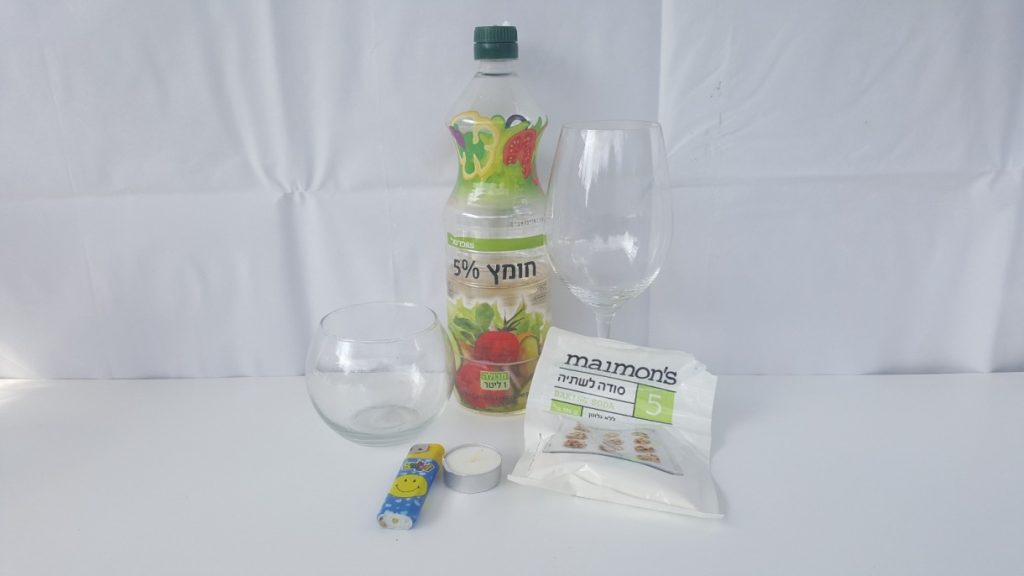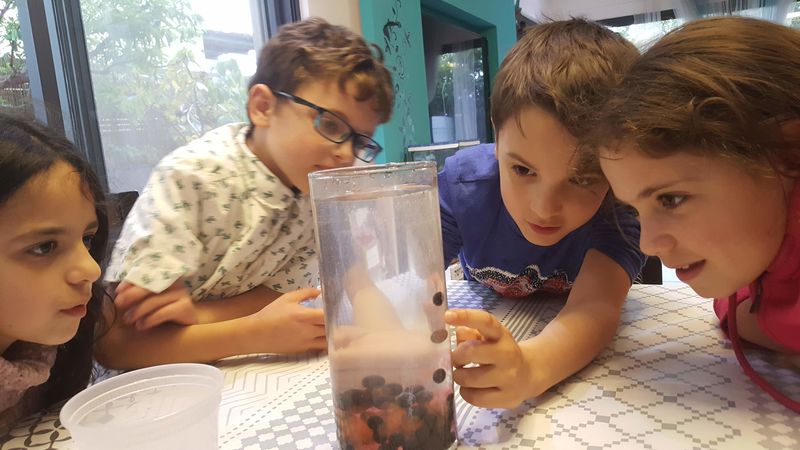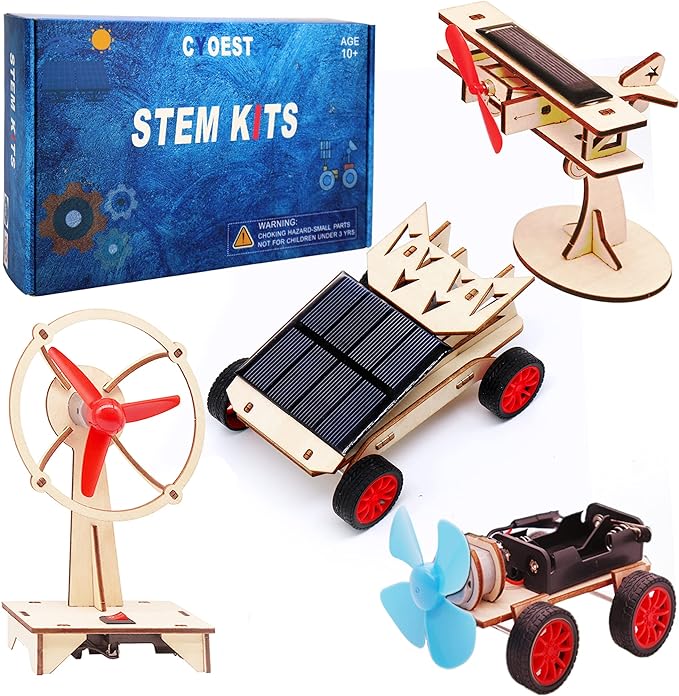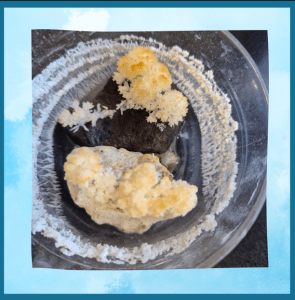Fire Extinguisher
Today, we’ll use everyday items like vinegar, baking soda, and a candle to show how a simple chemical reaction can put out a flame. This fun demonstration will reveal how carbon dioxide gas, produced from mixing an acid and a base, is heavy enough to extinguish a candle. It’s a perfect way to learn about chemical reactions, gases, and the role of oxygen in fire, all through a simple yet captivating experiment. Let’s dive into the world of science and discover something amazing!
Materials:
- 2 cups
- A candle
- Matches or a lighter
- Vinegar
- Baking soda
What to do?
- Light the candle inside an open container (such as a cup or bowl).
- In a separate cup, pour vinegar.
- Add baking soda to the vinegar.
- Wait a moment and then pour the “air” from the cup into the container with the candle.


How does this happen?
This experiment demonstrates a fascinating chemical reaction between an acid and a base.
Here, baking soda serves as the base, while vinegar acts as the acid. These two substances are chemically opposite, and their interaction results in a reaction known as neutralization. In this process, the acid and base counteract each other, transforming into water and salt. A notable byproduct of this reaction is carbon dioxide gas, visible as bubbles.
Carbon dioxide, being denser than air, has a unique property. Despite being transparent and invisible, when the cup is tilted, this heavier gas cascades into the cup holding the candle. As it fills the cup, it displaces the oxygen around the flame. This lack of oxygen smothers the flame, effectively extinguishing it.
Carbon dioxide (CO2) fire extinguishers are commonly used for certain types of fires. They work by displacing oxygen around the fire, effectively smothering it. CO2 extinguishers are particularly effective for Class B fires (flammable liquids) and electrical fires. They are advantageous because they leave no residue, but they’re not suitable for fires involving ordinary combustibles like wood or paper. Caution is needed as they can be hazardous in confined spaces and the discharge horn becomes extremely cold during use.
If you liked this experiment, Chechout the Baloon on Fire Experiment!
We’d love to showcase your creativity!
Share pictures of your experiments with us, and together, we can inspire young scientists everywhere!













